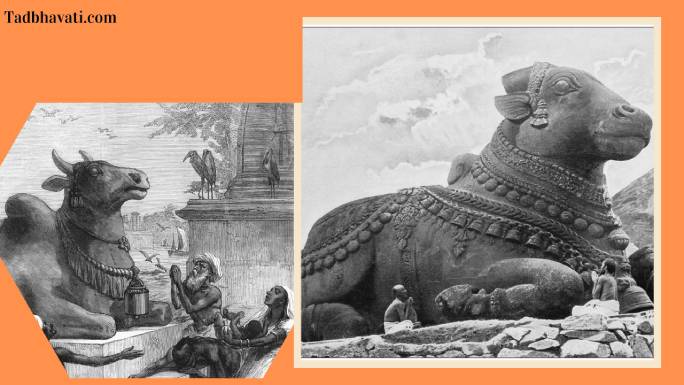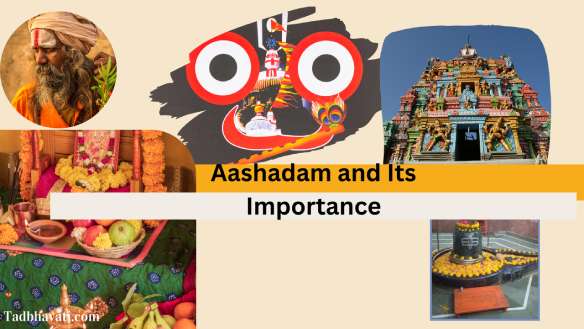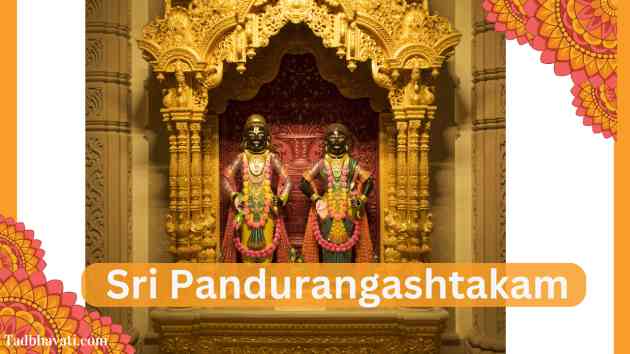When I was a kid my grandfather used to tell me to pray Lord Nandi before I offer my salutations to God Shiva. My grandfather use to see through the horns of Lord Nandeeshwara and chant something through the ears and gently rub the back of the Nandi statue and then also allow me to do the same.
I never questioned why we need to do this or didn’t even know the significance of Lord Nandi and assumed it was just the mount to carry God Shiva and Maa Parvati.
When I grew up, I learned that Lord Nandi is more than just a mount, and here are some interesting facts about the sacred Hindu Bull God
9 interesting facts about Lord Nandi

1. One amongst Shiva Parivaram
When we say Shiva parivaram (Family); it is no surprise that the entire universe, encompassing all creatures and elements was considered their family
जगतः पितरौ वन्दे पार्वतीपरमेश्वरौ
However, On the grounds of Shiva Puranam and Shaiva agama texts, eight key deities were specially referred to as the Shiva parivaram and Lord Nandi is one among them
Dieties of Shiva Parivaram: Shiva, Parvati, Ganesha, Kartikeya, Ashokasundari, Nandeeshwara, Chandikeswara, and Bhringi. A bigger list includes Pramatha Ganas, Bhutha Ganas, Guardians, Paricharikas, Vahanas, Saints and Sages.
These key Gods were given utmost importance in agamas and sacred scriptures. They were also enshrined in different directions and locations inside God Shiva’s temple, of which Nandi is placed facing the Shiva Lingam
2. An indomitable Believer in God Shiva
When devas and asuras decided to churn the milky ocean for the immortal nectar with help of Vasuki the serpent as the rope; a deadly poison suddenly emerged out of the ocean that started to burn all the worlds and creatures; In order to protect the worlds, Lord Shiva engulfed the Poison.
Feared by the sight, Goddess Parvati gently clutched her husband’s throat to stop the Hala Hala to reach further inside. However, during the process, some amount of Halahala had slipped away and Lord Nandi seeing his master consuming it without a second thought he too consumed it
Seeing this, Devas and Asura’s believed, “Oh! How Blind act it is, Lord Nandi is risking his life without thinking, If his Master had taken it, there is Goddess Shakthi to Protect him, But who is going to save Nandi now?
However, they could see that found no signs of illness in Nandi and he looked Unshattered. To everyone’s surprise, God Shiva appeared to them and with his Mighty voice Laughed at Devas and Asura’s for their innocence and said, Oh dear! Nandi is my Ardent devotee. His devotion to me is unmatchable and time-tested. He holds all my powers as well as Goddess Shakthi’s too. Hence he has not been affected in any way.
3. Holds an Important Role During the Pradhosham
In Shivate temples, Pradhosam holds immense importance. It is a bimonthly occasion on the 13th day of every fortnight as per the Hindu calendar. This is observed as the day/time when Lord Shiva performs Ananda Tandavam or Sandhya Thandavam between the horns of Lord Nandi deva.
Lord Shiva Temples across the world perform special rituals during this time; Where one can see Lord Nandi receiving equal importance as the Shiva Lingam present in sanctum sanctorum and is bathed with Turmeric, Milk, Sandal paste, Water, Fragrance oils and finally decorated with beautiful flowers.
Devotees observe immense devotion towards Lord Nandi and meditate upon him during this auspicious time to attain Lord Shiva’s attention; It is also believed that by observing Pradhosham with immense devotion one would get rid of the birth cycle and attain ShivaLoka after the mortal life
4. Symbol of Dharma
Vrushabham – The mighty bull is the representation of Dharma. In Puranas, the sacred bull is shown as the symbol of Dharma and Strength
The four legs of the bull are symbolic representations of
- Truthfulness
- Purity of mind and body
- Austere Practice
- Living by the rule
It was these four traits that form the Dharma symbolizing that Lord Nandi moves on a Dharmic path and it was also the reason why he has the potential to carry mighty Shiva.
This is one of the reasons devotees consider a great opportunity to take part in the procession like “Vrushabha Vahana Seva” where they believe holding the mighty bull idol carrying the idols of Lord Shiva and Parvati would bring change in their life and turn them to the righteousness path
When we de-code this, we can understand, one who was able to practice the four traits in their life would eventually master their mind and body and experience the Shiva Tattvam
5. The One who spread the Divine Knowledge of Srividya Sampradayam
In Shaktism, “Nandi Vidya” has an unique importance. Its the practice Lord Nandishwara worshipped Srividya Swaroopini – (Goddess Lalitha)
It was believed that Goddess Shakthi had taught the divine knowledge of Agamic and Tantric wisdom the sacred Srividya Sampradyam to Lord Nandi. Hence Goddess Shakthi is also known as Nandi Vidya Nateeshwari.
Lord Nandi in turn taught this sacred knowledge to the eight disciples who were identified as the progenitors of Nandinath sampradaya they were namely Sanaka, Sanatana, Sanandana, Sanatkumara, Tirumular, Vyagrapada, Patanjali and Shivayoga Muni
6. The First One to be Prayed in Shiva Temples
It is believed that when someone visits Shiva Temple; One must first pay their salutations to Lord Nandi before they offer their prayers to God Shiva. A popular belief is that God Siva is known to be in an eternal meditation state and one cannot distract it; However, a devotee in order to reach his essence must first seek the permission of Lord Nandi.
Here’s a popular stotram describing a devotees request to Nandi to allow them to pay their visit to God Shiva
Nandikesa Maha Bhaga
Shiva dhyana parayana
Gowri sankara sevartham
Anugnam dathumarhasi
Meaning: Oh Lord Nandi, the mighty bull, The one who is immersed in the prayer of Shiva Please Allow me to worship Lord Shankara with his consort Gowri
7. The Divine Lord For Villagers
Lord Nandi has a special place in the hearts of the villagers. Especially, farmers believe that worshipping the mighty bull would bring good crop yield and sufficient rainfall for their village.
They do so by offering lots of rice, peas, and fruits to keep their bulls happy and healthy.
In ancient times, when villages were stuck with droughts or famines, Villagers use to perform special rituals to appease Lord Nandi with several offerings and explain their grief to the idol to save their village during the hard times.
Villagers strongly believe that if they wholeheartedly pray to “Basavanna” it would definitely reach God Shiva and help them out of any trouble.

8. Symbol of Fertility and Prosperous
It is a common sight to see married couples perform a special pooja to Nandeeshwara. Devotees believe Lord Nandeeshwar is the symbol of fertility and prosperity and his grace would help them have a prosperous child for their family
9. A Representation of the Highest Spiritual Essence
When we see any Shiva Temple we might get doubt Why Nandi is in front of Shiva all the time. There is a spiritual reason behind it.
If we observe carefully the sacred Bull looks as if it was attentively watching the mighty Shiva Lingam all the time.
The symbolic representation tells us, whatever the problem may be, don’t get distracted by negative things. Keep faith in God all the time and pay utmost attention when you were in front of God without any feelings. This will in turn slowly bring a change in ones, such that they will soon start to realize what they were observing all the time; the mighty Divinity is present everywhere and whatever they watch they feel. At some point, they feel that divinity in present everywhere from existing to non-existing.
Summary
The Sacred Bull of Hindu God Shiva – Nandi. Is being worshiped and has been represented in India Culture since pre-historic times. Its representation can be dated back to ancient Civilizations.
There are several reasons that led humans to consider it as a pious animal, it was key to farming which is the main occupation in olden times. It is also the main source of transportation during ancient times. It is also the source from which villagers can raise cattle.
The relationship between a bull and a human can be dated back to ancient times. Which undoubtedly benefited humans in enormous ways from food to transportation and even lifestyle.
Next time, when we visit Lord Shiva Temple it’s our humble gesture to show respect and devotion to this mighty bull and offer our whole-hearted salutations without missing.



